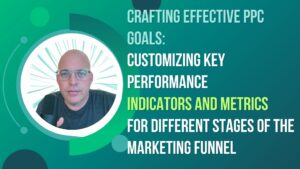Growth marketing is a data-driven marketing approach that focuses on identifying and leveraging the critical growth drivers for a business. It is an approach that looks at all aspects of the customer journey, from acquisition to retention, to drive sustainable growth for the business.
Unlike traditional marketing, which often focuses on branding and awareness, growth marketing is focused on driving measurable results and growth. Hence, growth marketers experiment and test different tactics and strategies to find what works best for the business.
Growth marketing uses data and analytics to track the performance of their campaigns and make data-driven decisions to optimize their efforts and maximize return on investment (ROI). Furthermore, this approach allows businesses to constantly improve and optimize their marketing efforts, ensuring they drive the best possible results.
Growth Marketing vs Traditional Marketing
At its core, growth marketing is a data-driven marketing approach that focuses on identifying and leveraging the critical growth drivers for a business. Growth marketers are constantly looking for ways to drive growth and improve the performance of their marketing efforts. To do this, growth marketers focus on all aspects of the customer journey, from acquisition to retention.
Growth marketing is focused on acquiring new customers and retaining and engaging existing customers to drive sustainable growth for the business. In addition, growth marketing is different from traditional marketing in several ways. Traditional marketing often focuses on branding and awareness to reach as many people as possible. This can be effective for some businesses but is not always the best approach for driving growth.
Growth marketing, on the other hand, is focused on driving measurable results and growth.
Why is Growth Marketing Important for Your Business?
Growth marketing is essential for businesses because it helps them identify the most effective channels and tactics for acquiring and retaining customers. With growth marketing, businesses can identify the most effective channels and tactics to attract and engage their target audience.
This could be through social media advertising, email marketing, search engine optimization (SEO), or different tactics. By focusing on the channels and tactics that are most effective, businesses can maximize their marketing efforts and budgets to drive the best results.
Growth marketing is also essential because it helps businesses understand the needs and behavior of their target audience.
Growth marketing involves deeply understanding the target audience’s needs, behavior, and motivations.
By conducting market research and analysis, businesses can gain insights into their audience and what they want, which can help them tailor their marketing messages and campaigns to better resonate with them. Moreover, this can lead to higher engagement and conversion rates and, ultimately, more customers for the business.
Further, growth marketing is essential because it allows businesses to optimize their marketing efforts and budgets to maximize ROI. With growth marketing, companies can constantly test and optimize their marketing efforts to maximize ROI.
This could involve conducting A/B tests to compare the performance of different ad creatives, landing pages, or email subject lines and then using the data to make informed decisions about what works best. Businesses can ensure their marketing efforts deliver the best possible results by continuously testing and optimizing.
Core Components of a Growth Marketing Strategy
A growth marketing strategy has four core components: acquisition, engagement, conversion, and retention.
Acquisition refers to attracting new users to your product or service. This can be done through various marketing channels such as paid advertising, organic search, social media, and email marketing.
Engagement is about keeping users active and engaged with your product or service. This can be done by providing valuable and relevant content, creating a great user experience, and offering customer support.
Conversion is the process of turning users into paying customers. You can do this by optimizing your website for conversions, offering discounts or coupons, and using compelling call-to-action.
Retention is all about keeping your customers happy and engaged so they continue to use your product or service. Achieving this requires providing excellent customer service, offering loyalty programs, and maintaining regular customer communication.
How Do You Determine What Type of Growth Marketing Experiment to Run?
Concurrently, to determine what type of experiment to run, a company must identify its goals and objectives and decide which kind of growth marketing strategy will best help them achieve them. There are many different growth marketing strategies, each with advantages and disadvantages. A company must consider all the options before deciding which method is best for them.
Hypothesis, Experiment, Report, and Analyze. (H.E.R.A)
HERA is a framework that helps companies determine which type of growth marketing experiment to run by breaking the process down into four simple steps: Hypothesis, Experiment, Report, and Analyze.
The first step in the process is to develop a hypothesis. This essentially predicts the outcomes of implementing a specific marketing strategy. For example, a company might hypothesize that increasing the frequency of email campaigns will result in a higher open rate.
The next step is to run an experiment to test the hypothesis. This could involve sending out emails at different frequencies to a group of customers and measuring the open rates.
Moreover, once the company completes the experiment, it must report on the results. This could include the open rate, click-through rate, conversion rate, and other relevant metrics.
Finally, the company must analyze the results to determine whether the hypothesis has been proven correct. If the idea is proven right, the company can implement the marketing strategy on a broader scale. The company must return to the drawing board if the hypothesis is incorrect. They will develop a new hypothesis to test.
Companies can ensure alignment with their goals and objectives by using the HERA framework to run experiments. This will help them achieve their desired results. Moreover, it’s a powerful tool that allows companies to test their assumptions. It makes data-driven decisions that are crucial for sustainable growth.








